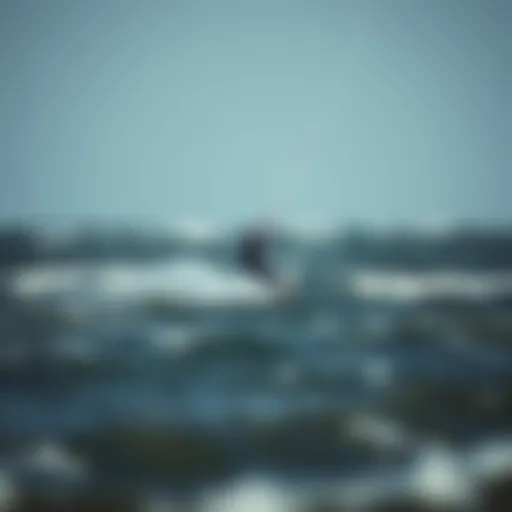Comprehensive Guide to Buying Foil Kiteboards

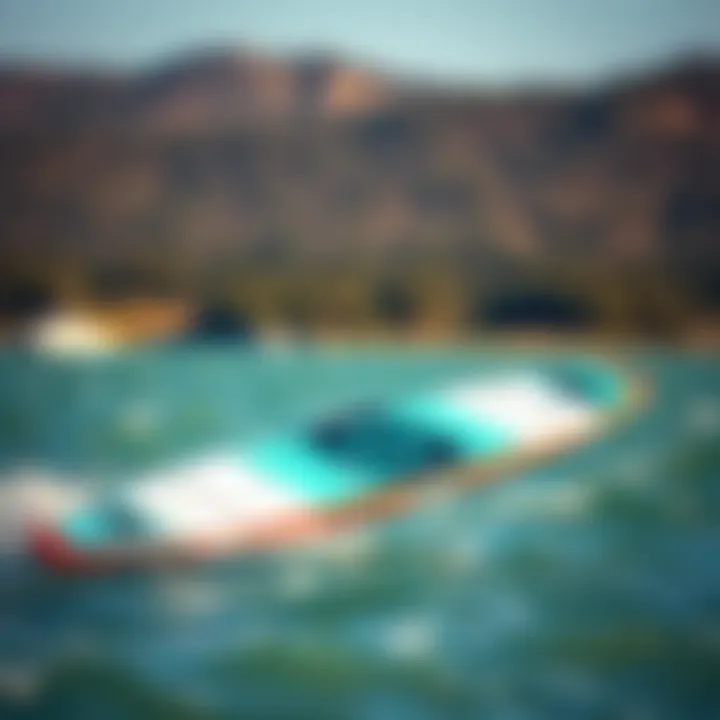
Intro
Foil kiteboarding has emerged as a captivating and exhilarating discipline within the kiteboarding community, allowing riders to soar above the water like never before. This comprehensive guide delves into the intricate landscape of foils that are available for sale, offering insights tailored for enthusiasts at every skill level. Understanding the various types of foils can significantly enhance your riding experience and performance, especially when conditions shift beneath your board. We will discuss not just the technical specifications of these foils, but also the essential elements to consider when purchasing one that suits your personal style and riding conditions.
Navigating through the world of foils may seem daunting at first glance, particularly with the plethora of options out there. From beginner-friendly designs that ensure stability to highly technical models favored by seasoned riders seeking adrenaline-filled adventures, there is much to unpack. Your choice of foil can dictate how you engage with the water, tackling everything from gentle swells to challenging waves. Let’s embark on this exploration of foils to help you make informed decisions in your kiteboarding journey.
Gear Insights
When it comes to selecting a foil, the myriad of features and designs can make your head spin. However, with a little guidance, you can zero in on gear that complements your style. Let's break down the essential elements:
Latest Gear Reviews
The market is flooded with exciting new models each season. One standout for 2023 is the Naish Hover 2023, which is praised for its stability and versatility—perfect for both learning and refining techniques. Riders report that its lightweight construction enhances maneuverability, making it a favorite among those who enjoy a mix of freestyle and wave riding. Another noteworthy option is the Slingshot Ghost Whisper, designed with a focus on performance in various water conditions. Its unique shape allows for smooth transitions even in choppy waters, appealing to more advanced riders who crave speed and agility.
Not only do these foils deliver quality, but they are built with cutting-edge materials to ensure durability. Make sure to check out relevant reviews on forums or platforms like Reddit to gather real-world insights from fellow kiteboarders who have tested these foils firsthand.
Essential Gear for Beginners
For those just dipping their toes into the world of foil kiteboarding, starting with gear that promotes confidence is vital. The Liquid Force Foil Fish is an excellent choice. Its wide base and forgiving design help beginner riders learn to feel the lift and balance without getting overwhelmed. Additionally, the CrazyFly Viento has garnered attention for its ease of use, featuring a simple assembly process and responsive handling.
When transitioning from traditional kiteboarding to foiling, it’s important to pay attention to your kite as well. Opting for a kite that supports hydrofoiling, like the Duotone Dice, can greatly enhance your experience.
Key Features to Consider:
- Material: Lightweight yet sturdy construction makes a huge difference in performance.
- Size and Shape: Match these to your body weight and preferred riding style.
- Stability: Look for foils that promote an easy learning curve.
"The right gear can transform your kiteboarding experience from daunting to breathtaking. Invest wisely!"
Educating yourself on the specifications and user experiences before making a purchase will save you from buyer's remorse down the line.
Stay tuned for upcoming sections where we’ll share techniques and tips to elevate your kiteboarding skills and outline safety practices to ensure every ride is a safe and enjoyable adventure.
Intro to Foil Kiteboarding
Foil kiteboarding is a rapid ascendance of an exhilarating water sport, capturing the interest of adventurers across the globe. It taps into the fundamental human desire for flight, blending the thrill of kiteboarding with the fine control and finesse that foiling demands. Understanding this niche is essential for enthusiasts seeking to enhance their riding experience or for those pondering the shift from traditional kiteboards. The movement of a foil beneath the water alters not just how one navigates the ocean, but fundamentally changes the dynamics of the sport itself.
As riders glide above the water, they experience a sensation akin to flying; the feeling is unlike anything else one can encounter in a water sport. This innovative approach can offer significant benefits, including increased speed and reduced drag, allowing kiteboarders to harness the wind’s power more effectively. With a foil, conditions that might typically yield a lackluster ride become prime opportunities for thrilling adventures.
The Evolution of Foil Technology
The journey of foil technology doesn’t start from scratch. Rather, it builds on a history of hydrodynamics and aerodynamics that date back centuries. Originally used in various watercraft designs, foils have swiftly made their way into kiteboarding. Early iterations were sometimes clunky and difficult to control, but advancement in materials and designs has brought slick, user-friendly foils to the market.
A notable leap emerged when designers began experimenting with different shapes and sizes of wings, mimicking bird wings and marine creatures. This evolution has dramatically enhanced stability and lift, creating models that can adapt to various riding conditions, from light wind to heavy gusts. Not only has technology made these foils lighter and more resilient, but it has also led to improved performance that can excite both novices and experts alike.
Why Choose a Foil Board?
When it comes to selecting a foil board, several considerations propel it to the forefront of modern kiteboarding. First, the versatility of a foil board cannot be understated. With the right setup, riders can experience the ocean in ways they may never have imagined. Typically, boards that accommodate foils are designed for agility, allowing for quick turns and agile maneuvers.
Additionally, the range of conditions one can ride in with a foil board opens the door for more frequent sessions. More glide means you can ride in lighter winds without sacrificing speed, making even the less-than-ideal days rewarding. Plus, the potential for a longer riding season is enticing—fewer limitations mean those who live in gusty areas can make the most of variable conditions.
In terms of ease of learning, while there’s a steep learning curve, those who are committed tend to find that foiling opens up a new world of possibilities that traditional kiteboarding cannot match. Many folks who've taken the plunge often describe the transition as intimidating yet exhilarating; the payoff in skill acquisition is notable. The ultimate question remains—would you prefer to skim the water or glide above it? In mulling that over, the case for foil boards becomes exceedingly compelling as you step into a transformed kiteboarding landscape.
Understanding Foil Dynamics
When it comes to kiteboarding, grasping foil dynamics is crucial to enhancing both performance and enjoyment on the water. This topic encompasses the intricate dance between the forces at play when the foil interacts with water, allowing riders to achieve that thrilling lift that makes foil kiteboarding distinct. Knowing how lift and drag operate can be the difference between gliding seamlessly above the water or struggling to stay afloat.
Lift and Drag Explained
Lift can be understood as the force that raises the foil into the air. Imagine a bird soaring through the sky; its wings create lift by channeling air in a specific way. In kiteboarding, the foil is designed with wings that push against the water to generate enough upward force, allowing riders to levitate. The key components include:

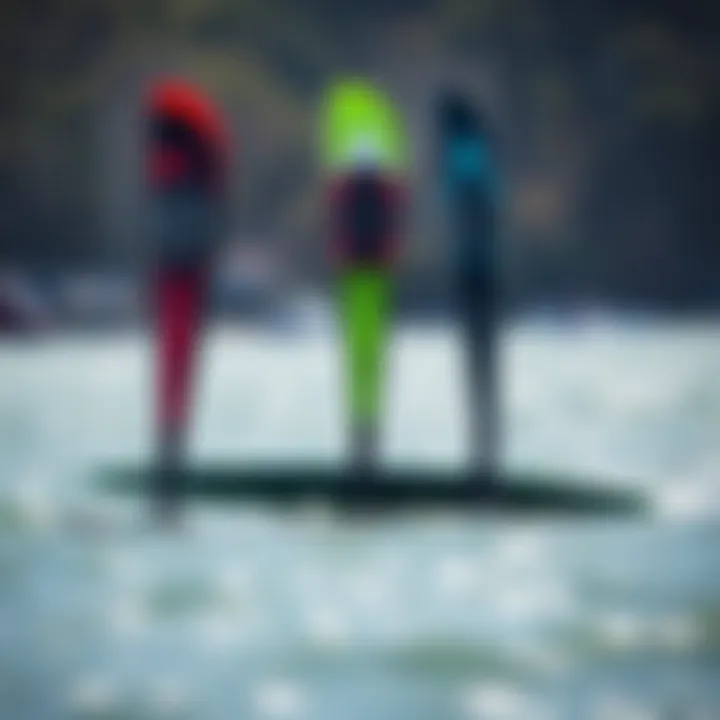
- Angle of Attack: This refers to how the wing tilts relative to the water surface. A well-angled foil helps maximize lift while minimizing resistance.
- Wing Shape: From narrow and pointed designs to broader wings, each shape caters to different riding styles and conditions. Riders often need to find a balance that works best for their experience level.
- Speed: As speed increases, lift generation typically rises, but it may also create more drag, which is a measurement of resistance. Managing this balance requires finesse.
Understanding drag is equally important. It’s the force that opposes the motion of the foil through the water. Higher drag means more effort is required to maintain speed and lift. Factors influencing drag include:
- Surface Area: A larger surface area can mean more lift, but it also increases drag.
- Water Conditions: Choppy waters or waves can lead to greater drag, while flat, calm conditions allow for smoother rides.
"In essence, the interplay between lift and drag determines how effectively a foil can perform on the water, influencing speed and stability."
Stability and Control Factors
Once lift is achieved, stability and control become paramount. Riders need to feel secure and confident while gliding above the water. Stability affects how easily a rider can maneuver and maintain balance. Important factors include:
- Foil Design: A well-balanced foil grants better control. Advanced riders may opt for foils designed for high performance, but these often come with a learning curve.
- Rider Position: Where you position your weight can greatly influence control. Shifting weight forward or backward adjusts the foil’s angle and overall stability.
- Board Design: The board's shape and materials can also impact performance. A wider board may offer more stability at slower speeds, which is beneficial for novices or casual riders.
Being aware of these factors means kiteboarders can make informed choices about their gear. By understanding foil dynamics, you not only improve your the riding experience but also cultivate a deeper respect for the physics that make this sport exhilarating.
Types of Foils Available
When it comes to kiteboarding, selecting the right foil can dramatically influence your experience on the water. The types of foils available today cater to a wide range of skill levels and riding styles. Understanding these types is essential for any kiteboarding enthusiast, whether you are just starting out or looking to upgrade your gear. Each category comes with unique characteristics that can enhance your performance, boost your maneuverability, and ultimately determine how much fun you’ll have out there.
Beginner Foils
For those just dipping their toes into the kiteboarding scene, beginner foils are specially designed to ensure a steady and enjoyable ride. Generally, these foils sport larger wingspans which provide greater lift and stability, making it easier to get up and riding without feeling overwhelmed. A typically forgiving design helps in coping with the less predictable aspects of wind and water.
Some key traits of beginner foils include:
- Broader Wings: This feature gives additional lift and supports slower speeds, making it easier for novices.
- Sturdy Construction: Most beginner foils are built tough to withstand the wear and tear that comes with frequent use and the occasional mishap.
- Affordability: Many manufacturers offer reasonably priced beginner options, which allows novices to invest in gear without breaking the bank.
If a new rider wants to improve skills gradually, opting for a beginner foil can make all the difference.
Intermediate Performance Foils
As one gains confidence and experience, upgrading to an intermediate performance foil is often a natural next step. These foils strike a balance between speed and control, designed for riders who are ready to push their limits while still pampering to a degree of practicality. They feature advanced design elements that allow for more dynamic riding.
Characteristics to consider include:
- Moderate Aspect Ratio: This provides an optimal balance of lift and drag, allowing for greater agility and speed.
- Enhanced Maneuverability: Intermediate foils are made for riders looking to enjoy turns and tricks without losing stability.
- Material Choices: These foils often employ a mix of materials which contribute to performance while keeping weight down.
The right intermediate foil can enable kiteboarders to explore a variety of conditions and tricks, unlocking new facets of the sport.
Advanced Racing Foils
For those who have mastered the basics and seek high-speed thrills, advanced racing foils are engineered with precision and performance in mind. These high-tech foils are tailored to deliver optimal speed and efficiency, making them a top choice for competitive kiteboarders.
Important features of advanced racing foils include:
- High Aspect Ratio Wings: These designs minimize drag while maximizing lift at high speeds, offering a streamlined glide.
- Cutting-Edge Materials and Technology: The construction often incorporates high-tech materials to minimize weight while maximizing durability and flexibility.
- Customization Options: Many advanced foils allow riders to tune their setup according to personal preferences, helping to refine performance further.
Ultimately, advanced racing foils cater to serious enthusiasts looking to excel in competitions or simply experience the sport at its highest level.
Whether you’re a novice eager to find your footing, or a seasoned rider looking to race the wind, the right foil can play a pivotal role in elevating your kiteboarding experience.
Key Features to Consider
When it comes to selecting a foil for kiteboarding, there are several key features that one must not overlook. Choosing the right foils can make or break your experience on the water, so it’s only smart to dig into the nitty-gritty. Factors such as material, wing design, and adjustability shouldn't just be an afterthought; they are the backbone that supports your performance and enjoyment.
Material and Build Quality
The material and build quality of a foil are critical. They largely determine a foil’s performance, durability, and overall longevity. With options ranging from aluminum to carbon fiber, each material comes with its own pros and cons.

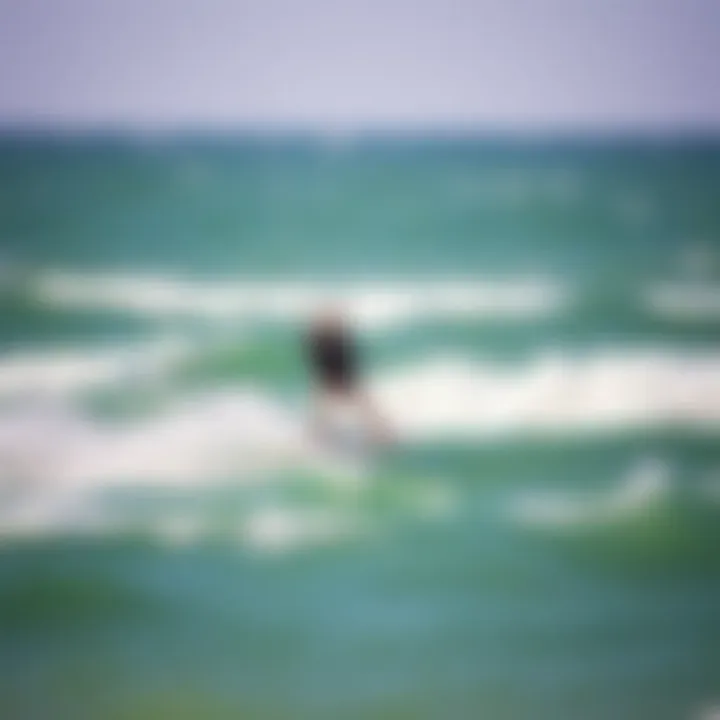
- Aluminum: Typically more affordable, aluminum foils are robust and stand the test of time, especially for those just starting out. However, they can be heavier, which could impact lift.
- Carbon Fiber: Offers superior performance and weight savings but at a steeper price tag. Its structures are often stiffer and respond better to inputs, translating into sharper turns and quicker acceleration.
It's worth pondering what you prioritize. If you plan to ride often, investing in high-quality build may pay dividends down the road. A well-made foil can withstand the rigors of the ocean without succumbing to damage easily.
Wing Design Variations
When it comes to wing design variations, understanding how a foil’s shape and size affect your ride makes all the difference. The wing is essentially the heart of the foil, determining lift, drag, and overall airflow dynamics. Various designs serve different riding styles:
- High Aspect Ratio Wings: These offer more lift and are generally suited for advanced riders. They allow for high-speed gliding and are efficient in flat water.
- Low Aspect Ratio Wings: More stable and easier to control, making them a better choice for beginners. They perform well in choppy water and provide better maneuverability.
Each design caters to specific conditions and riding preferences. If you find yourself often in the surf or less than ideal conditions, a low aspect wing will provide that stability you're looking for.
Adjustability and Compatibility
A foil that allows for adjustability can be a game-changer. This feature lets you fine-tune your gear according to personal preferences and conditions. A few things to look for:
- Height Adjustability: Being able to change the mount height allows you to adapt your foil performance to suit the waves and winds.
- Wing Compatibility: Some foils come modular, meaning you can swap the wings to suit various conditions. This flexibility can cater to both cruising and racing performance, making your setup versatile.
Before making a purchase, check whether the foil you are considering can adapt to other boards or wings. This ensures that your investment can be useful in a number of scenarios.
"The right features in a foil can elevate your riding experience tremendously; understanding them is a step towards mastering the sport."
Selecting the right foil involves paying heed to these key features. The importance of each element plays into the puzzle of creating the perfect setup tailored to your own riding style and conditions. So, take your time: one’s foil is a partner on the water, deserving of careful consideration.
Purchasing Considerations
When it comes to picking the right foil, understanding purchasing considerations isn't merely beneficial—it's crucial. This part of the journey is where you weigh your options, assess your needs, and plan an informed buying strategy. Getting this right can not only enhance your kiteboarding experience but also ensure longevity with your equipment. Here, we’ll dissect various topics that play a pivotal role in making your choice:
New vs. Used Foils
When stepping into the world of foil kiteboarding, one of the first debates that arise is whether to buy new or used equipment. Each option comes with its suite of advantages and drawbacks.
New foils typically offer better reliability, performance, and the latest advancements in technology. When purchasing new, you have the peace of mind from warranties, so if something goes wrong, you’re covered.
On the flip side, buying used foils can save a pretty penny, making it a tempting option for beginners or those testing the waters. However, it is imperative to examine the foil’s condition closely. Scratches, dents, or a warped structure can significantly influence performance. It's like finding a good used car; you wouldn't roll the dice without a thorough inspection.
Budgeting for Your Foil
Once you’ve decided on the new vs. used controversy, getting your budget straight is next on the agenda. The cost can vary widely based on the type and brand of foil. If you aim high and target advanced racing foils, be prepared to splash some serious cash. But this doesn't have to leave your finances in tatters. Here are some points to consider:
- Set a Range: Pin down a realistic price range based on your experience level.
- Additional Gear: Remember to factor in other necessary equipment like the board, harness, and safety gear if you haven’t got them yet. It’s like going shopping for an outfit; you need the whole ensemble to make it work.
- Second-Hand Deals: Monitor online marketplaces or local ads for second-hand foils that might fit your budget without sacrificing quality. Sometimes the best catch is hiding in plain sight.
Where to Buy Foils
Knowing where to purchase your foil can be as important as the choice of the foil itself. A lot of options abound, so here’s a breakdown to steer you in the right direction:
- Local Kite Shops: Always support your local businesses. They often have great stock, and you can get expert advice straight from the source.
- Online Retailers: Websites like Amazon or specialized kiteboarding gear sites host vast selections. The convenience is unmatched, but keep an eye on return policies—just in case.
- Classifieds and Forums: Platforms like Reddit or Facebook Marketplace can provide golden opportunities for second-hand deals, but proceed with caution. Gouges and damage can be masked in photos, so inspect before you buy.
In summary, taking the time to thoroughly contemplate these purchasing considerations will empower you to make an informed decision, ensuring that you find the foil that best aligns with your goals in kiteboarding. Armed with this knowledge, you can confidently step forward into choosing gear that’ll elevate your riding experience.
Caring for Your Foil
Caring for your foil isn’t just a routine task; it’s fundamental to prolonging the life of your equipment. Invested in your foil kiteboarding journey? Proper maintenance and storage make a significant difference in performance and longevity. Spending time out there on the water is exhilarating, but neglecting your gear could lead to costly replacements or subpar experiences.
You’ve probably heard the saying, "A stitch in time saves nine." Well, this rings particularly true in the world of kiteboarding. Regular care helps avoid bigger problems down the line. The key is to understand that both fresh water and salt water have unique effects on different materials.
Maintenance Tips
To keep your foil in top-notch condition, consider the following maintenance tips:
- Rinse with Fresh Water: After every session, give your foil a good rinse with fresh water. This helps remove salt crystals that can corrode metal parts or deteriorate materials.
- Inspect Regularly: Look for any signs of wear or damage. Check the wings, mast, and fuselage for cracks. Addressing these issues early can save you headaches later on.
- Dry Thoroughly: Make sure to dry your foil completely before storing it. Any moisture left can promote the growth of mold or other harmful substances.
- Lubricate Moving Parts: If your foil has adjustable components, don’t forget to apply some silicone lubricant. This ensures smooth operation and prevents rust.
- Use a Protective Bag: When transporting your foil, invest in a padded travel bag to protect it from bumps and scrapes.
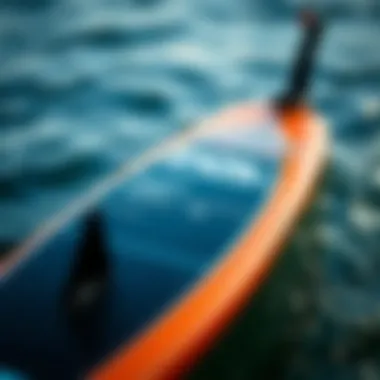
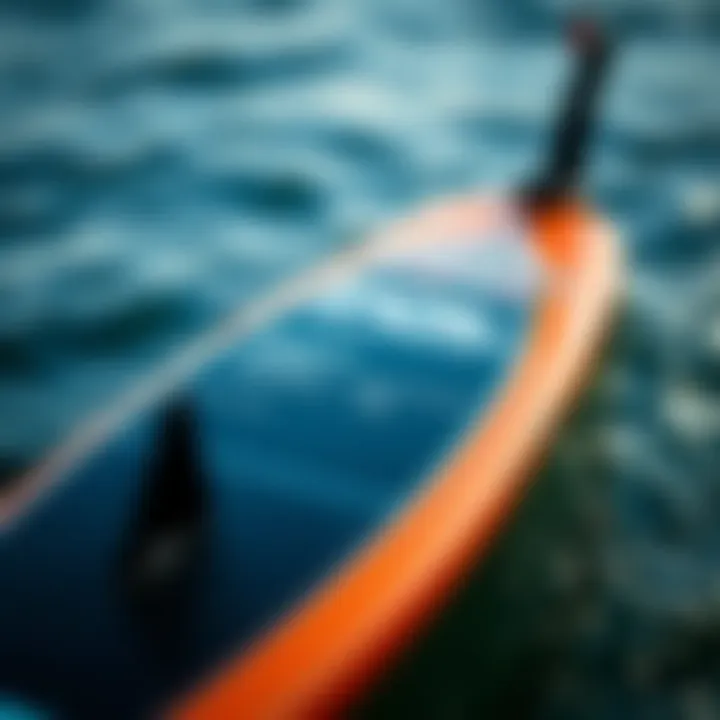
"A little upkeep goes a long way—look after your gear, and it’ll look after you in return."
Storage Recommendations
How you store your foil can impact its longevity. Here are a few recommendations for optimal storage:
- Cool and Dry Place: Avoid extremes in temperature and humidity. Store your foil in a cool, dry place away from direct sunlight, which can degrade materials over time.
- Avoid Weight Pressure: Don’t stack heavy items on top of your foil. Even minor pressure can warp wings or damage structural integrity.
- Vertical Storage: When possible, store your foil vertically. This minimizes warping and allows for better air circulation.
- Demount Components: If your foil disassembles, consider taking it apart for storage, especially the wings. This reduces the risk of scratches and other types of damage.
To wrap it up, maintaining and caring for your foil is crucial for a fulfilling kiteboarding experience. With the right approach to maintenance and storage, you can enjoy the ride longer and enhance your time spent out on the water. Always remember: it’s not just about riding; it’s about riding smart.
Future Trends in Foil Technology
Understanding future trends in foil technology is like peering through the mist of what’s to come in the kiteboarding scene. This section emphasizes the importance of staying ahead of the curve in an ever-evolving sport, where innovation can significantly enhance performance and riding experiences. As kiteboarders, whether you're a novice or seasoned pro, being aware of advancements can make a real difference, allowing you to choose the right equipment that aligns with both personal aspirations and changing environmental conditions.
Emerging Technologies
The landscape of foil kiteboarding is entering a thrilling phase, driven by advancements that are reshaping our approach to design and performance. New materials like carbon fiber and innovative shaping techniques are at the forefront of these changes, promising to create foils that are both lighter and more resilient than ever before.
Key categories to pay attention to:
- Adaptive Wings: They adapt based on speed and riding style, ensuring optimal lift and control across various conditions.
- Smart Technology: Sensors integrated into the foils can monitor performance metrics in real-time, helping riders adjust techniques on-the-fly.
- 3D Printing: This technique is beginning to revolutionize how foils are manufactured, allowing for intricate designs and quick prototyping, making custom options not just a dream but reality for many.
These technologies not only offer improved agility and speed but also make it easier for riders to learn and grow their skills. When you can ride confidently, you will enjoy your time on the water more, leading to an overall better kiteboarding experience.
Sustainability in Foil Production
As the awareness of environmental impacts grows, so does the demand for sustainable practices in the production of kiteboarding gear. The kiteboarding community is increasingly calling for manufacturers to step up their game, focusing on eco-friendly materials and processes. Using recycled materials, for instance, can help minimize waste while maintaining performance standards.
Important aspects to consider:
- Bio-based Composites: Some brands are introducing foils made from biological materials, like hemp or bamboo, which provide decent strength combined with reduced environmental footprints.
- Sustainable Manufacturing Practices: This includes reducing energy consumption during production and shipping, which is essential for lowering the overall carbon footprint.
- End-of-life Recycling Programs: Some companies are now offering take-back initiatives for old foils, ensuring they don’t end up in landfills.
"Greener practices are not just a trend; they’re becoming a necessity as the sport evolves. If we care about preserving our oceans and environments, we need to push for better policies and materials in our equipment."
Embracing these future trends will not only enhance your kiteboarding experience but contribute positively to the environment. Being part of this exciting shift can elevate the sport while fostering a sense of community among riders who value sustainability.
Finale
In the realm of foil kiteboarding, understanding the nuances of selecting the right foil is paramount. As we come to a close in our exploration of this exhilarating sport, let’s highlight why these considerations truly matter. Choosing the right foil impacts not just performance but the overall experience on the water.
When embarking on your foil journey, it’s essential to remember the balance between skill and equipment. Different riders have varying needs based on their level of expertise and preferred riding conditions. If you’re still finding your feet, opting for a beginner foil can make all the difference. They provide stability and ease of use, shaping a better foundation for your skills as they develop.
For intermediates and advanced kiteboarders, performance foils offer the thrill of speed and agility. These foils are engineered for precision and respond to the most subtle movements, allowing for more dynamic maneuvers. Understanding the technical aspects, alongside personal preference, is vital in making an informed choice. Not every foil suits every person or environment.
Additionally, maintaining your gear and being mindful of future trends are key to long-lasting enjoyment of foil kiteboarding. As technology evolves, staying updated on sustainable practices and advancements enhances not just your experience but also contributes to the broader picture of environmental responsibility within the sport. This awareness encourages a community that respects both the craft and nature’s playground.
"Choosing the right foil isn’t merely about performance; it signals respect for the sport and an understanding of your own journey."
The right foil aids in developing skills, enhancing enjoyment, and ensuring safety. As kiteboarding grows, so does the palette of options available in the market. It’s about recognizing your personal preferences, mastering foiling dynamics, and equipping yourself with knowledge.
In summary, investing time in choosing the right foil adds tremendous value to your kiteboarding adventure. It’s not just about the foil itself, but how it accentuates the joy of riding the waves and conquering the skies. So, as you set out to purchase, reflect on what you need, what excites you, and how it will elevate your kiteboarding experience.
Recap of Key Points
As we wrap up, let’s summarize the essential elements discussed:
- Understanding Foil Types: Recognizing the differences between beginner, intermediate, and advanced foils can aid in selecting one that fits your ability level and riding style.
- Technical Aspects: Familiarity with lift, drag, and stability allows riders to appreciate the mechanics of their equipment better, leading to improved performance.
- Purchasing Considerations: Weighing the pros and cons of new versus used foils, as well as budgeting wisely, will lead to a more satisfying purchase.
- Maintenance and Care: Implementing best practices for maintaining and storing foils preserves their longevity, enhancing overall investment.
- Future Trends: Keeping an eye on emerging technologies and sustainability in foil production promotes an informed approach to buying.
Final Thoughts on Selecting the Right Foil
Choosing the right foil goes beyond simply picking the shiniest or most talked-about option. It’s about the connection between the rider and the equipment. One must consider personal riding styles, environmental conditions, and future aspirations in the sport. This is not merely a transaction but a crucial step in your kiteboarding journey.
As you venture into the world of foil kiteboarding, leverage the knowledge acquired throughout this guide. Reflect on your experiences and preferences, and don’t hesitate to seek advice from fellow enthusiasts. The right foil awaits—one that complements not just your ride but also your passion for the sea and skies.
Embarking on your foil journey equipped with this information can lead to years of enjoyment, exploration, and respect for the sport. Each gust of wind and crash of water becomes a part of your ongoing narrative in this thrilling pursuit.



